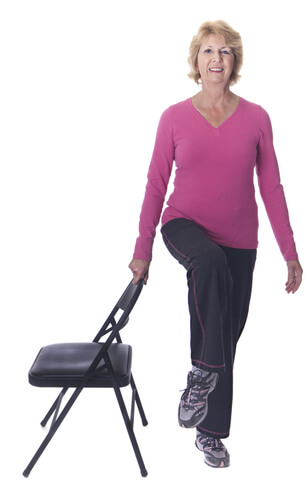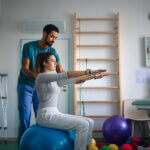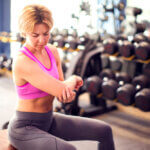Losing your balance and falling might be a fear of yours if you’re an older adult. This fear isn’t irrational, either. Most people’s bodies start to wear out as they age, and this makes balancing and other routine tasks more difficult. There are some ways that you can work on your balance even when you start getting older. One of these options is to start seeing a physical therapist for balance training for seniors, and there are two exercises that could be included in your training plan.
- Single limb stance
When you first begin balance training for seniors, your therapist is likely to keep therapeutic exercises simple — the balancing exercises they show you are likely to contain only one movement at a time. They could also have you use support during the exercises to help you keep your balance. One example of an exercise that could be included in the early stages of your balance training for seniors is the single limb stance.
Getting into the starting position for this exercise involves you finding a stable chair to hold on to. You’ll want to stand up straight behind the chair and hold on to it with both hands. From this starting position, slowly raise your left leg at the knee and shift your weight to your right leg when you do this. You should try to raise the left leg as high as possible. Once the left leg has been raised, balance on your right leg for as long as you can. Your ultimate goal should be to balance for about one minute, and then bring your left foot back to the ground and repeat these steps to balance on the other leg.
- Clock reach
As your balance training for seniors starts to help, your therapist can add in exercises that require movement while you balance. An example of such an exercise is the clock reach.
You’ll start this exercise by standing behind a stable chair with your feet about hip width apart. You should also imagine that your body is at the center of a clock. Visualize the 12 as being right in front of you and six being directly behind your back. To begin the clock reach, hold on to the back of the chair with your right hand. Next, bend your left knee up so that you’re balancing on your right leg, and raise your left arm so that it’s pointing to 12 on the imaginary clock. While continuing to balance, slowly lower your arm behind you until it gets to the six position. When your arm gets to six, slowly return it back to the 12 position. Your goal should be to balance and do this arm movement twice on your left side before repeating the same steps on your right side.
Seniors can find effective balance training at Peak Performance
Your balance can be affected by natural aging. This is why we offer geriatric rehabilitation that includes balance training. Our clinics offer free screenings to pinpoint the sources of your balance issues. We also use the data from your screening to create a personalized therapy plan for your needs, and the plan we build for you can include therapy techniques such as:
- Manual therapy
- Aquatic therapy
- Therapeutic exercise
- Instrument assisted soft tissue mobilization (IASTM)
Don’t wait to start getting our help with your poor balance. Contact us today for more information or to schedule an initial appointment.







